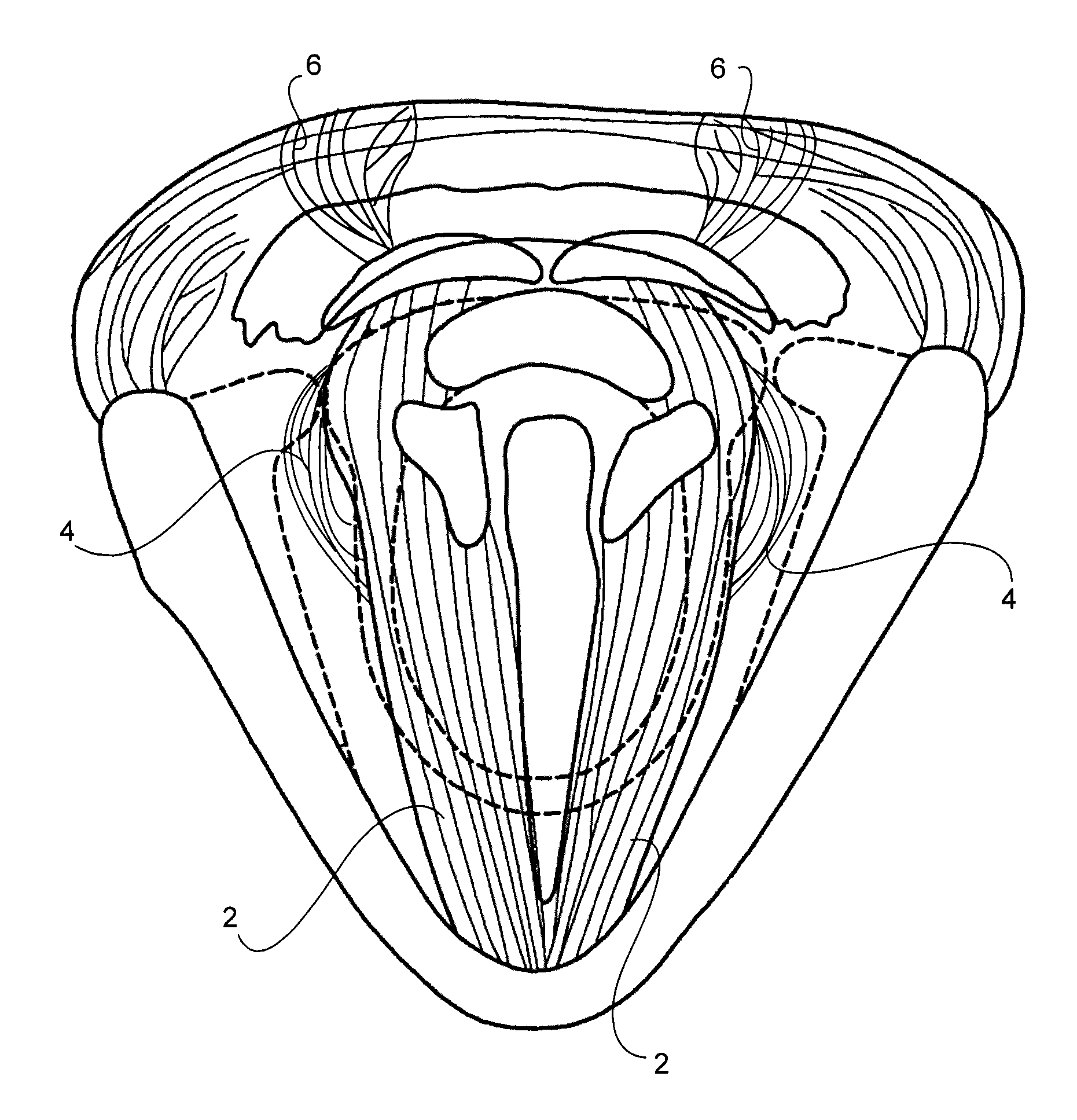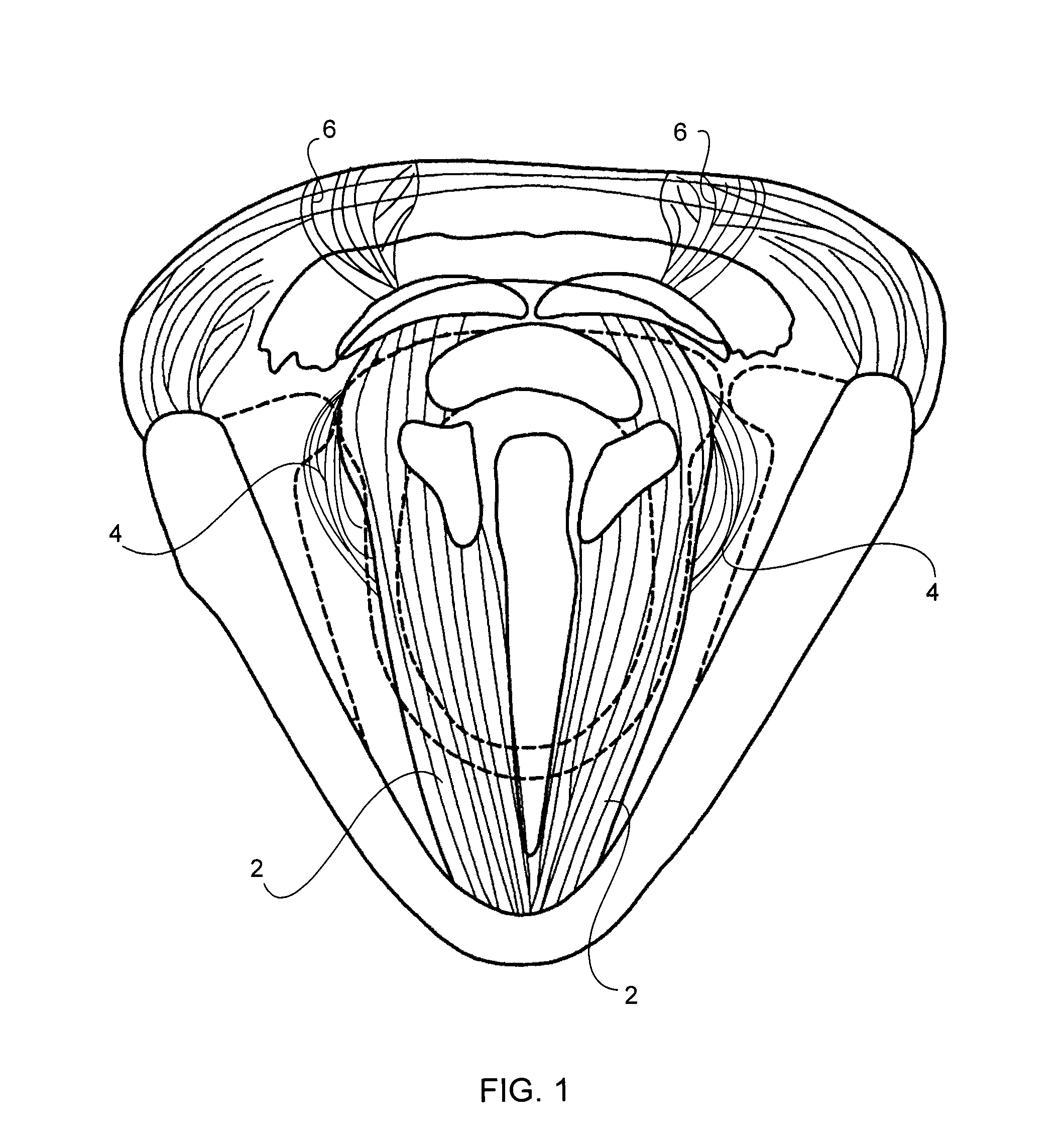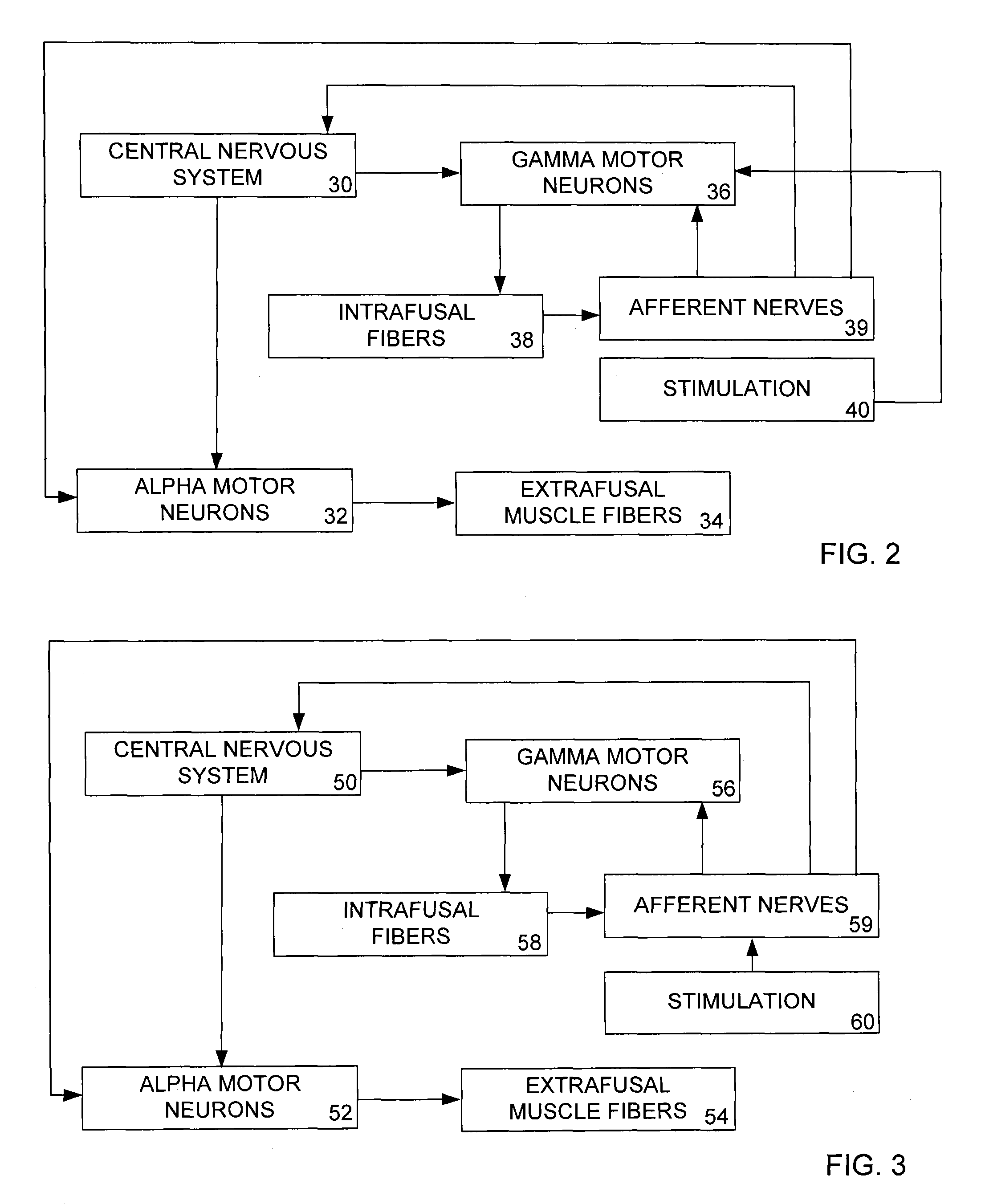Method and apparatus for the treatment of spasmodic dysphonia
a spasmodic dysphonia and treatment method technology, applied in the field of spasmodic dysphonia treatment methods and equipment, can solve the problems of limiting people's communication, isolating and even debilitating, and difficult speech, and achieve the effect of reducing the number of people's voice, limiting the communication, and limiting the use of telephones
- Summary
- Abstract
- Description
- Claims
- Application Information
AI Technical Summary
Benefits of technology
Problems solved by technology
Method used
Image
Examples
Embodiment Construction
[0022]As discussed above, the general belief is that symptoms of SD result from abnormal motor signals to motor neurons which control the muscles of the larynx. Referring to FIG. 1, the muscles of the larynx implicated in SD include the thyroartenoid 2, the cricoarytenoid 4, and the posterior cricoarytenoid 6. Abnormal motor neural activity causes laryngeal muscles to spasm, resulting in a voice break and the symptoms of SD. Within this paradigm it is assumed that BTX is effective because it interferes with the motor nerves innervating the muscle into which it has been injected, and thus interferes with the muscle's ability to spasm. The central nervous system continues to send abnormal motor signals to motor neurons, but they are unable to cause muscle contractions as forcefully.
[0023]However, electromyography shows bilateral neuromuscular changes in the muscles of the larynx after unilateral injection, which suggests that there is more benefit to BTX injection than simple weakenin...
PUM
 Login to View More
Login to View More Abstract
Description
Claims
Application Information
 Login to View More
Login to View More - R&D
- Intellectual Property
- Life Sciences
- Materials
- Tech Scout
- Unparalleled Data Quality
- Higher Quality Content
- 60% Fewer Hallucinations
Browse by: Latest US Patents, China's latest patents, Technical Efficacy Thesaurus, Application Domain, Technology Topic, Popular Technical Reports.
© 2025 PatSnap. All rights reserved.Legal|Privacy policy|Modern Slavery Act Transparency Statement|Sitemap|About US| Contact US: help@patsnap.com



